 |
Welcome, come sit and visit for awhile |
|||||||||||||
|
Under-Eye Dark CirclesPublished on August 19, 2022 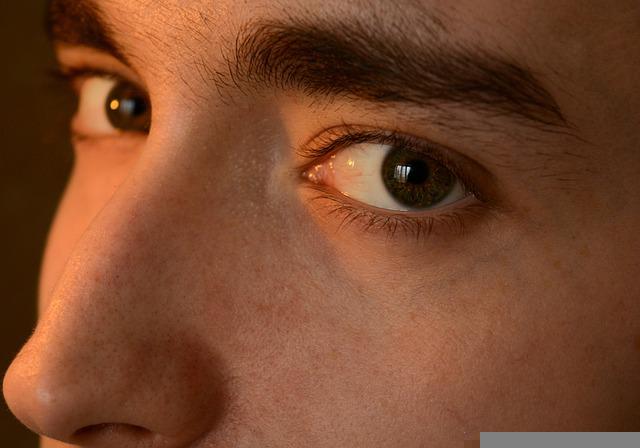
With the stress of modern era has been pushed into our lives, most of us face the problem under the ring. Stress is not the only cause, there are many other side effects such as urban pollution, changes in weather and lifestyle is not healthy, contributing to the ring below. In this article we will share with you 3 simple steps that can help you get rid of dark circles under the eyes. Stay healthythis is the first step towards a healthier life in general. Eat healthy foods like fresh vegetables, fruits and nuts. Green vegetables such as spinach and broccoli are good anti-oxidants and helps reduce facial wrinkles. Fruits are good sources of all kinds of vitamins. Involved in a sport or exercise, this will help you stay fit and stress, here you will be able to sleep well. Once your body releases stress and you sleep well, you’ll see amazing results in the area below the eyes. Avoid hazardous products skin carethere are many skin care products, which claim all skin problems like wrinkles, age spots and dark circles under the eyes. However, the reality is that many products for skin care which are full of hazardous materials such as perfumes, parabens, alcohol and dioxins. These materials can be classified as irritation, depression, carcinogens and neurotoxins. They may have various side effects ranging from irritation and itching to reduce fertility and permanent damage to brain cells. You should read the ingredient list to find out hazardous materials and if any unwanted material in it, so do yourself a favor, stop using the product. Use natural skin care productsUse skin care products are safe and have no side effects. These products have all natural ingredients derived from natural sources such as vegetable oil, fruits, seaweed, tree bark and herbs. These materials have no side effects and address the causes of skin imperfections. For example, one ingredient is Eyeliss; it is a peptide-like structure that is very effective in reducing the fragility of the capillaries under the eyes. It makes them stronger and helps to improve the level of collagen in the skin under the eyes. According to a recent study of this skin care, he suggested that Eyeliss very effective in treating dark circles under the eyes which should be used as an ingredient in cosmetics eye. In a word, only natural ingredients can help you in treating dark circles under the eyes and if you want effective results, then learn to avoid danger. If you are looking for more tips about eye care, check out Ophthalmic Consultants of the Capital Region now! 10 Tips to Protect Your PeepersPublished on August 08, 2022 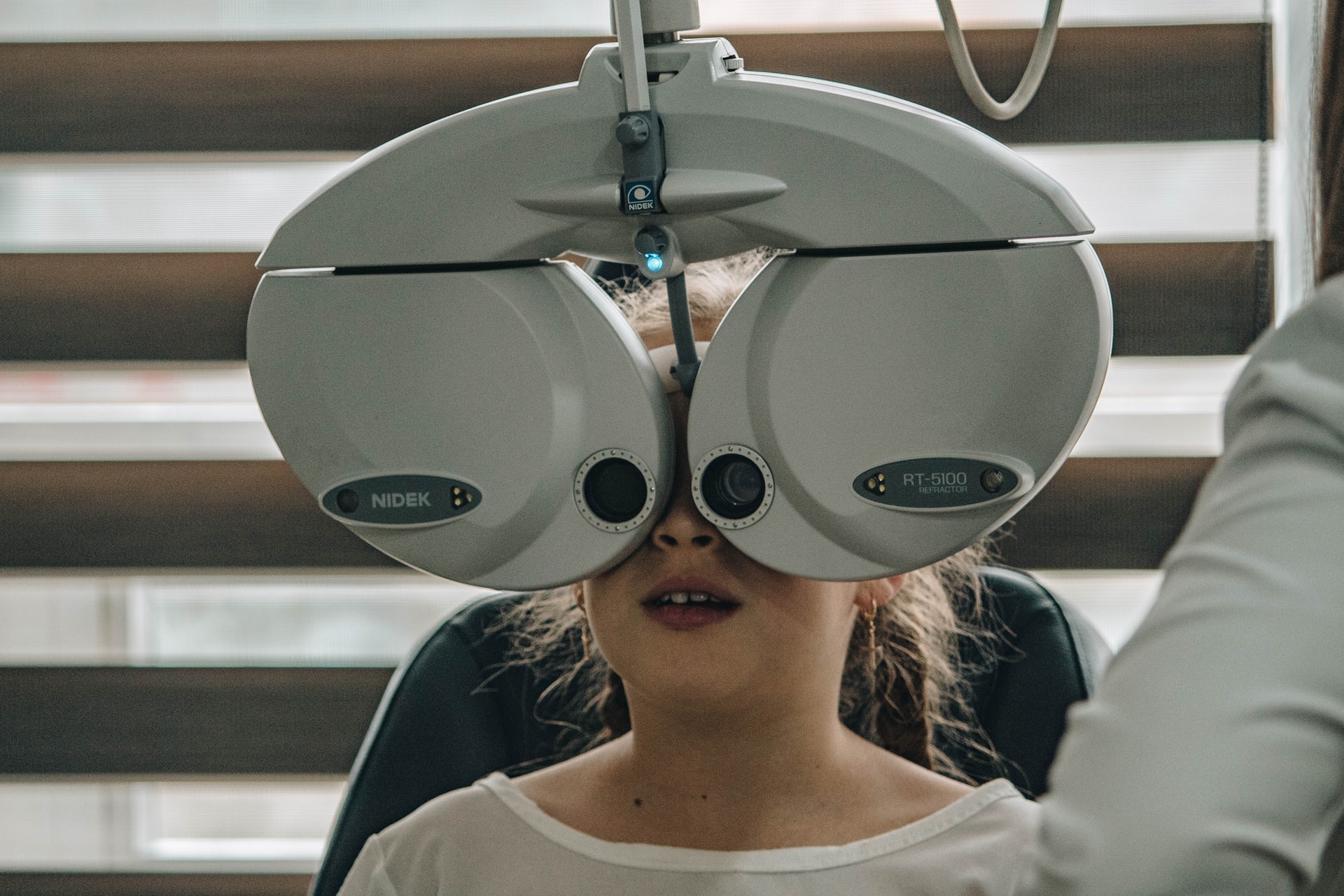
From afternoons in front of the screen to afternoons under the sun, life can take its toll on your eyes. Eye care is our number one priority here at Ophthalmic Consultants of the Capital Region, we’ve created a list of 10 tips to help you maintain your healthy vision!
Having problems with your eyesight and looking for an ophthalmologist? Check out Ophthalmic Consultants of the Capital Region to have the best doctor for eyes. Diabetic Eye Problems Need Special CarePublished on August 02, 2022 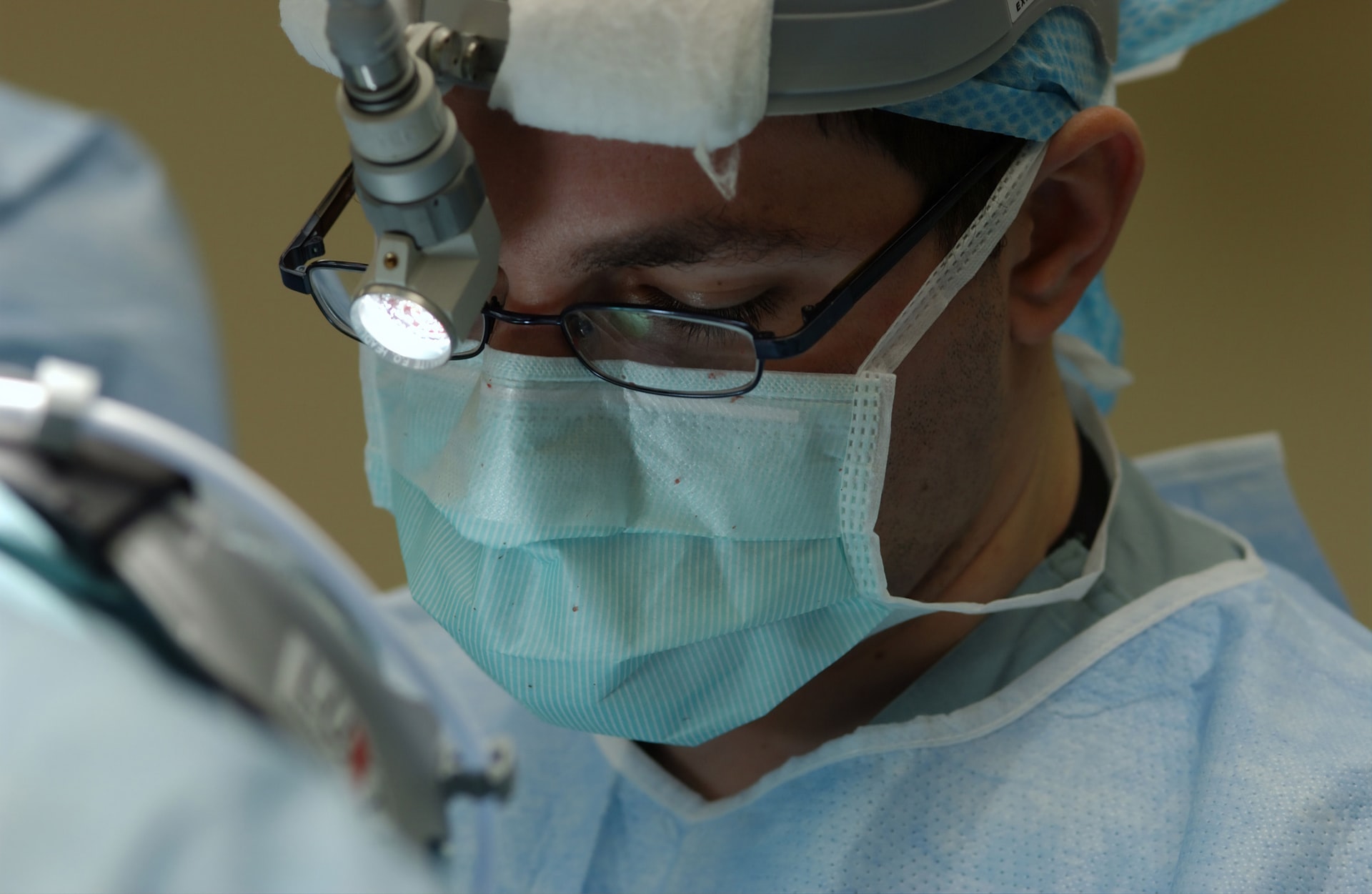
Diabetic eye problems are common but potentially devastating long-term complications of diabetes. The elevated and frequently fluctuating blood sugar levels damage the tiny blood vessels in the eye. These supply nutrients to the retina of the eye, the part that detects light. The disease causes these blood vessels to become fragile and prone to leaking. The Optometrist or Ophthalmologist examining your eyes may see swelling, haemorrhages, areas of poor blood flow or abnormal blood vessels. If you have diabetes, your risk of developing retinopathy increases the longer you have had diabetes. It typically starts to be seen after having diabetes for 5 years. However, in Type 2 diabetes, it may already be present when you are diagnosed. In Type 1 Diabetes, 98% of patients have retinopathy after 15 years. 78% of Type 2 Diabetes have some level of retinal damage after 15 years. If your diabetic retinopathy remains undetected and untreated, it can lead to irreversible and progressive vision loss. Treatment helps to keep it under control. With early and appropriate treatment, only 5% experience significant visual impairment. You should have your eyes examined by your Optometrist every year. This should be a dilated exam: eye drops will be administered to make your pupil large, which enables a thorough look at your retina. You should work closely with your medical team to keep your blood sugar levels well controlled. This helps to prevent damage in the first place. When significant retinopathy is discovered, the treatment is often using a laser to cauterize abnormal blood vessels. The aim is to prevent further damage. You may not regain any of what has been lost. Prevention is better than treatment, so look after yourself. Symptoms of Diabetes:The following symptoms occur with diabetes, but are not necessarily early in the disease. You may already have significant retinopathy when you experience:
Having Diabetes puts you at increased risk of other eye conditions like glaucoma or cataracts. Consult your doctor for more information on your specific risk of developing diabetic eye problems. Today, patients take an active role in their health care. Be an active patient about your eye care. Visit Ophthalmic Consultants of the Capital Region to know more information about your eye care. Diabetic Eye Problems Need Special CarePublished on August 02, 2022 
Diabetic eye problems are common but potentially devastating long-term complications of diabetes. The elevated and frequently fluctuating blood sugar levels damage the tiny blood vessels in the eye. These supply nutrients to the retina of the eye, the part that detects light. The disease causes these blood vessels to become fragile and prone to leaking. The Optometrist or Ophthalmologist examining your eyes may see swelling, haemorrhages, areas of poor blood flow or abnormal blood vessels. If you have diabetes, your risk of developing retinopathy increases the longer you have had diabetes. It typically starts to be seen after having diabetes for 5 years. However, in Type 2 diabetes, it may already be present when you are diagnosed. In Type 1 Diabetes, 98% of patients have retinopathy after 15 years. 78% of Type 2 Diabetes have some level of retinal damage after 15 years. If your diabetic retinopathy remains undetected and untreated, it can lead to irreversible and progressive vision loss. Treatment helps to keep it under control. With early and appropriate treatment, only 5% experience significant visual impairment. You should have your eyes examined by your Optometrist every year. This should be a dilated exam: eye drops will be administered to make your pupil large, which enables a thorough look at your retina. You should work closely with your medical team to keep your blood sugar levels well controlled. This helps to prevent damage in the first place. When significant retinopathy is discovered, the treatment is often using a laser to cauterize abnormal blood vessels. The aim is to prevent further damage. You may not regain any of what has been lost. Prevention is better than treatment, so look after yourself. Symptoms of Diabetes:The following symptoms occur with diabetes, but are not necessarily early in the disease. You may already have significant retinopathy when you experience:
Having Diabetes puts you at increased risk of other eye conditions like glaucoma or cataracts. Consult your doctor for more information on your specific risk of developing diabetic eye problems. Today, patients take an active role in their health care. Be an active patient about your eye care. Visit Ophthalmic Consultants of the Capital Region to know more information about your eye care. How Does Laser Eye Surgery Work?Published on July 23, 2022 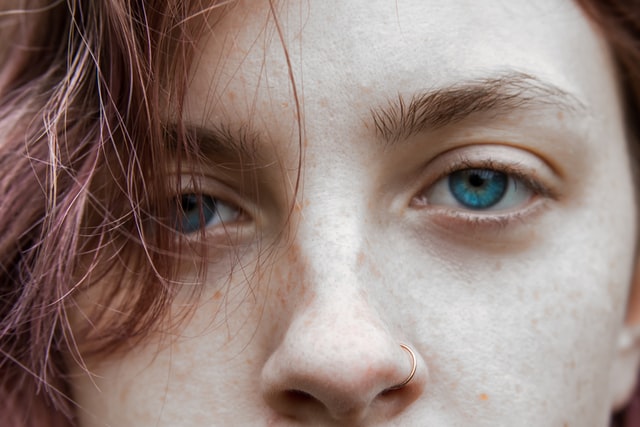
If you have poor eyesight or simply hate wearing contacts or glasses, then you have probably often thought about getting laser eye surgery. This could most likely give you the eyesight that you want without having to use any aids. A lot of people are curious about how the laser eye surgery works and who would be a good candidate for this kind of surgery. The first thing that should be determined is if you are qualified to get the surgery. Good candidates for laser eye surgery are those who are:
Those who can not have laser eye surgery have:
When someone falls into the first catagory, then those people will want to know exactly how the laser eye surgery works. This will eplain how LASIK laser eye surgery is done as it is the most common and least expensive type and the details above are for this type of surgery as well. Step 1 - Once you get set up in the operating room, you will have drops placed in your eye that will number them so they do not feel anything that goes on during the surgery. This is the only anesthia that you will be give because you will be awake for the whole procedure. Once your eyes are numb, there is going to be an instrument that is placed into the eye to keep the eyelids out of the way so that the surgeon can access them easier. If there is any foreign matter in your eyes they will remove it. Then the cornea will be lifted gently with a surgical knife. Step 2 - This step will explain why you have to be awake while they are doing the surgery on your eyes. The surgeon is going to ask that you focus on a particular point in the room so that they can have the eye in a certain position to move on to the next step. It is vital to follow the surgeons orders at this time so that there will not be any mistakes made. Step 3 - This is when the laser is used to make the cornea the shape that is needed to correct the vision problems that you have. After this has been completed, the surgeon will close your eye adn you will be able to go home. It is important that you follow any after care advice that has been given to you. While the surgery is only going to take af ew minutes, the results will last a lifetime, and the days and weeks following the surgery are lived with the post operative warnings being adhered to. You will want to make extra sure that you do everything you can to make sure you heal properly. Learn more about laser eye surgery here at Ophthalmic Consultants of the Capital Region. When Do You Need A Laser Eye Correction?Published on July 12, 2022 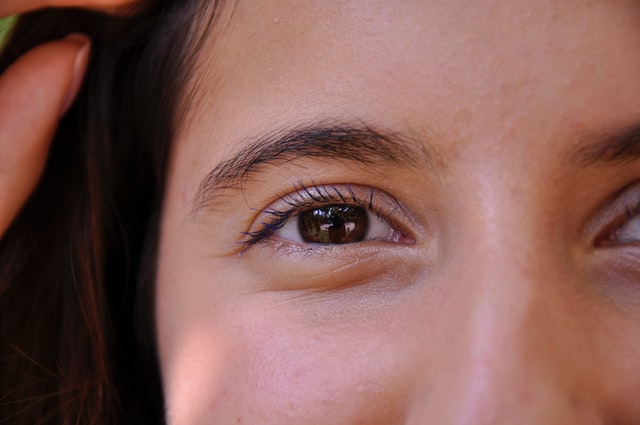
The people having trouble from the near sightedness have some great news that they can fix their eye sight with the latest laser correction eye equipment. If you visit any qualified eye specialist in your area then you are going to experience that he or she is having the laser correction eye equipment in their personal clinics. So you do not need to worry about this problem anymore because you can fix it with just hitting a laser in your eye lens or eye ball. You are required to take some medicines to get relief from the pain if it is necessary. Laser correction eye can remove the burden of your glassesSometimes the near sightedness cause a great problem to you because whenever you want to read anything like news paper or a book then you need your glasses to read it fully clear. You do not need to worry about it because you have the latest treatment of laser correction eye. This treatment is very easy and reliable. You need consult the doctor before you are going to get the advantage from this treatment. The laser correction eye not only fixes your eyesight but also it protects you from getting the weak eyesight in the future. How does the laser correction eye work?When you feel that you are feeling headaches when you are trying to read any news paper, magazine or book then it is the sign that you are a victim of week near sight. In this case you should consult a qualified eye specialist in his personal clinic or in the hospital to make the treatment of laser correction eye. This treatment is the only key to make your eyesight as clear as it was before. The laser correction eye means that there is a ray of laser that can fix your eye ball’s week spot from where you are unable to see things clearly. The symptoms of weak eyesight and the treatment of laser correction eyeThere are many symptoms of weak eyesight both near and far and when you are feeling any one of those then you should get the treatment of laser correction eye to fix it as soon as possible. After getting the treatment of laser correction eye you are going to feel that your eyesight is as fresh as it was before. The symptoms can be one of the followings
Are you looking for more information about laser eye correction? Check out Ophthalmic Consultants of the Capital Region now. How To Choose The Right Contact LensesPublished on June 29, 2022 
Today's contact lenses are used to correct specific vision problems or to change eye color. With all of the advances in technology, more people than ever before are able to wear contacts. There are a variety of lenses available including disposable, extended wear, flexible war, and gas permeable and even contacts for special needs. You can change or enhance your natural eye color, even if you don't require vision correction. With color altering lenses, you can achieve just the right look for a costume or simply a magical pair of green eyes that will look spectacular with a new dress. It gives a whole new meaning to the lyric 'don't it make my brown eyes, blue.' Disposable lenses are perfect for the person who doesn't have time to do daily care and cleaning of their contacts. Depending on the brand your optometrist recommends, you can choose either a daily disposable or one that will last one week or two weeks. Disposables are exactly what their name implies; you take them out and throw them away each day. Conveniently, disposables are available for different eye types now including those with astigmatism and if you were looking to try out colored contacts for a while, disposable lenses come in varying shades as well. Gas permeable contacts are designed for people who require a very specialized prescription. In some cases, astigmatisms on the eye make it very hard to fit the candidate with the right level of correction. A person whose vision is 20/180 may not correct to 20/20 with other types of lenses. Gas permeable is more expensive, but the ultimate decision lies between the optometrist and the patient. Flexible wear and extended wear lenses are designed for those who like to be able to sleep in their contacts rather than deal with putting them in and taking them out several times a day. These are especially useful for those who travel a great deal or are frequently away from home. No worries about having to carry your lens cleaning kit with you everywhere you go. More than 30 million people wear contact lenses and it requires a visit to your eye care professional that can then determine if you're a candidate for contacts. With so much variety and so many advances, the chances are good that your local ophthalmologist has the right contact lens for you. Eye FloatersPublished on June 08, 2022 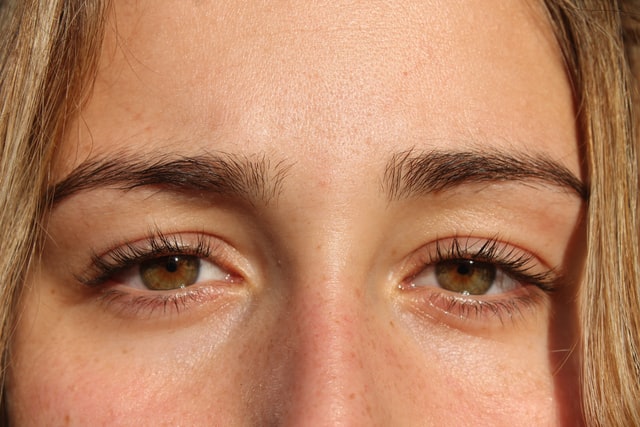
Eye Floaters are dark small specks that can be seen in vision while looking at the sky or a bright surface. Especially on a sunny day when you look at the sky or on a bright wall from where light is emitted. Eye floaters are created by a jelly like material called vitreous humor that gets created inside the eye ball. As these jelly moves along with the eyeball, when you try to focus on it, it disappears from sight. Eye floaters can come in different size and shapes. They look like a thread, some look like a ball, some look like a chain. However they are harmless. When the number of images increases, means that there is some problem which needs to look at. Symptoms - Eye Floaters - One and allThe uniqueness of floaters in the eye differs from individual to individual. It may be like a thread, wheel, and small balls and can make different types of shapes. Particularly occurs when you are looking at a bright surface from where light is emitted continuously. They move little slower than the eye movement and that's when you can see floaters eye moving around the vision. Vitreous Humor is like water like substance that helps in maintaining the shape of the eyeball and works as a shock observers for eyes. It is Ninety eight percent water like substance but it is four times viscous when compared with water. Retina is made of very light sensitive cells called as rods and cones that detect the color, shape and the pattern. Eye Floaters / Vitreous Humor - The frustrating ones!Floaters change their shapes depending up on Vitreous Humor, which means they keep changing their position and move around. The alteration of Vitreous Humor could be one of the eye floaters causes. Floaters in the eye generally can be unnoticed but if it is disturbing when you are looking at a bright background, its better to look up and down and from left to right. These eye floaters are generally not harmful and don't trigger a surgical floaters treatment easily. Eye floaters become as active as age of human increases. It becomes irritated. But Brain will keep watching these eye floaters and make them unnoticed and they don't come across in the vision. Eye floaters causes with auras or flashing lights. This can be cause by various events like a blow in the eye, pressure in Vitreous Humor, Head ache, migraine or High blood pressure and thus eye floaters causes,. If you start seeing sparkling lights with increase in number of floaters eye, it is strongly advised to check with a eye physician immediately. It can be result of the retina being damaged. Seeking Advice & Cure - The Best possible ways!The first step to cure for eye floaters in the eye is to seek an eye practitioner for any increase in the number of floaters and also before thinking of any cure for eye floaters. This is extremely important if you are a short sighted. If you have had any surgical floaters treatment like laser or cataract in the past and if you see an increase in the number of floaters, it is advisable to get in touch with an eye practitioner immediately. Most of us want to avoid most of the surgical treatments. As Eye floaters are harmless there are not much surgical floaters treatments discovered to cure floaters. Natural way of healing is the only better way to come out of this. It is always recommended to have a nutritional diet to have healthy eyes and it can also be the first step to cure floaters. Good diet will not only help in curing eye floaters, but it helps all the major parts of the body to function well. If you are looking for more eye care tips, check out Ophthalmic Consultants of the Capital Region now! Treating Red Eye Problems And CausesPublished on May 03, 2022 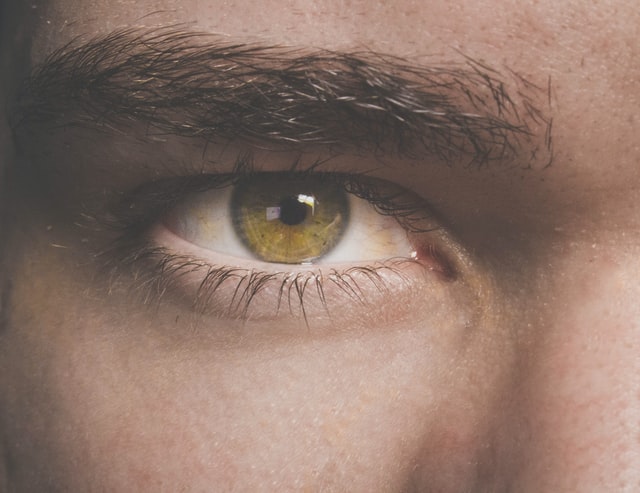
Everyone has had red eye problems at some point in time in their lives. This is true for those that wear glasses or contacts and those that have perfectly normal vision and require no corrective lenses for clear vision. Understanding what is causing or triggering your red eye problems is essential in order to use the correct over the counter products or to seek appropriate medical care if the condition is more serious. Treating red eye problems due to fatigue :It is important to keep in mind that red eye is actually the symptom of a problem with the eye, not the problem itself. Treating red eye is largely about treating the symptoms while also getting to the root of the problem. Some red eye, especially for those suffering from long days and lots of work on a computer, is likely the result of eye strain and fatigue. For this type of eye irritation lubricating drops or artificial tear products that are available over the counter can be very helpful. Other options include simply finding a dark area and resting your eyes as frequently as possible. This allows the normal tears to hydrate the eye tissue and minimize the irritation and dry feeling. Treating red eye problems due to allergies :Another cause of red eye can be allergies. In this case the red may be caused from the rubbing of the eyes triggered by the itching sensation the allergies provoke. If this happens it is essential to avoid rubbing your eyes as this can cause damage and further irritations. If the allergic reaction is due to debris in the eye such as chemicals, dust or pollen rubbing is particularly problematic. A better option is to flush out the eye with a saline or eye wash solution to remove the source of the allergic reaction and then treat with an antihistamine drop. These medicated eye drops come both as over the counter drops as well as in prescription form. Often seasonal allergies or allergies to known triggers are best treated with prescription forms of eye drops. Treating red eye problems due to infections :Red eye problems, particularly when associated with a crusty discharge or excessive tearing or cloudy discharge should not be treated using an over the counter remedy unless recommended by a doctor. This is because these are the most common symptoms associated with potentially serious eye infections. These infections may be bacterial or viral and may include damage to the outer or deeper tissues of the eye. Pink eye or conjunctivitis can cause red eye and both these conditions need to be treated using specific drug therapies. A medical doctor or ophthalmologist will need to examine the eyes, determine if the infection is viral or bacteria, and then prescribe antibiotics, steroids or medicated eye drops or a combination of the options. Failing to treat the infection and only treating the symptoms can result in chronic types of eye infections with possible serious and vision restricting effects over time. Red eye problems are usually easy to treat and, once diagnosed, individuals may not need to return to the doctor each time the condition occurs. If any changes are noted in vision, eye health or any type of discharge from the eye seeking immediate medical diagnosis is very important and essential. For more tips about red eye problems, you can check out Ophthalmic Consultants of the Capital Region. Colored contacts : vision and cosmetic correctionPublished on April 25, 2022 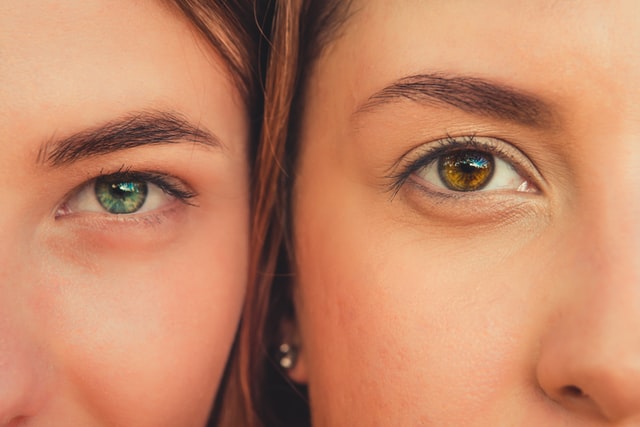
Colored contacts can be for vision correction and special effect lenses,find out all about these cool contact lenses that are theatrical and practical Colored contact lenses are used by people in need of improving their vision and by people who want to change their eye coloring by varying degrees. Vision correction lenses are designed to enhance the individual's ability to see. They can correct nearsightedness, farsightedness, astigmatisms and other eye conditions that produce blurred, incomplete or inaccurate images through incorrect focusing of the light on the retina of the eye. These lenses are available through a licensed eye care professional and come in a wide variety of styles and times. Some vision correcting lenses can also double as colour enhancing lenses. A colored lens that does not improve vision and is purely for appearance is called Plano. Colored contact lenseswith corrective powers are available for those looking for disposable contacts for those who require bifocals and those suffering from astigmatism. When colored contact lenses first became available there was very little regulation over who could sell them and the quality of the lenses provided. This meant that the whole area of colored lenses was not just open to abuse but that the potential for damage to sight was massive. Thankfully many countries acted reasonably quickly and introduced regulations regarding these types of lenses. Many countries deemed Colored contacts to be medical devices and imposed appropriate legislation. This results in requiring a prescription for colored contact lenses in many countries, the U.S. included. Once purchased colored lenses need to be used and cared for properly. The eye is a particularly sensitive part of the body and are easily damaged. Always adhere to the recommended usage instructions. Colored lenses can be purchased in 3 different color stages. The first stage that is available is referred to as visibility tints. Theses serve a practical purpose as a very light tint, usually green or blue, is added to make the lenses more visible to the user. This increased visibility can help a lot during the fitting and removal processes. The second stage of colored contact lenses is called enhancement tints. These do not change your eye color but instead serve to make your natural eye color appear even stronger and more noticeable. The third stage is color tints. The idea of these is to totally change your eye color. The central portion of your contacts remain clear so that you can see clearly. The range of different colors and new designs that are available is massive. These are hugely popular contact lenses and much of this is due to their use in both movie and theatre. Colored lenses for dark eyes - If your natural eye color is dark you'll need to search for more specialized kinds of colored contacts and often the opaque type are the most acceptable as these stop your natural eye color from showing through. Colors like dark blue, dark green and even dark violet frequently look good on people with terribly dark eyes. Colored contacts for light colored eyes - Tinted lenses are possibly the best choice of colored contacts for folks with light eyes as these see-through lenses reinforce the natural color of the eyes. When selecting the best color for you, your skin and hair color can also make a massive difference to the completed overall image. Colored contact lenses for light hair/skin - If your skin or hair is light, the blue and green coloured lenses will often look the best while folks with dark skin or hair can use the darker shades of green, blue or violet, with striking effects. Cheap colored lensesIt is possible to get these lenses cheaply from reputable suppliers who often have substantial discounts. Getting contacts cheaply does not have to mean poor quality. Crazy colored contact lensesA colored contact lens like this gives you a world of options from gothic to mirrored to just plain old wacky lenses. Discount colored contact lensesDiscount contacts are always easily found on the internet. All the most trusted suppliers have some kind of discounts available. This means you are able to get quality contacts at a substantial discount. Some companies occasionally offer what they term free trial colored contact lenses or free colored contact lenses. Of course there is very little for free but depending on your individual circumstances there might be an offer to suit you. There are bound to be some restrictions on offer but it is also free to look. You might be lucky. Click here for more tips about vision correction. Average Lasik Eye Surgery CostsPublished on April 12, 2022 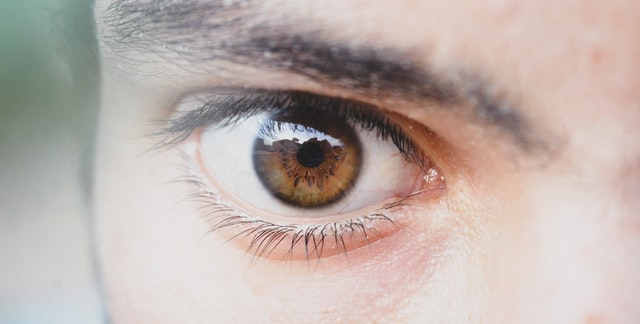
Usually average Lasik eye surgery cost has increased almost every year since first introduced, this due to the advance technology that used for this procedure, Lasik eye surgery popularity which causes the increased demand for this procedure also more or less affected to the Lasik eye surgery cost, but there are good news for you who want go for Laser eye surgery that average Lasik eye surgery cost decreased from 2009, this is because economical condition that affected to demand for this procedure. Advance technologies for this procedure apply for minimizing risks and side effect after procedure, formerly people be horrified if hearing Lasik or laser surgery for eyes, but because of higher success rate for this procedure today people prefer with laser or Lasik surgery to correcting their vision problem. Basically average Lasik eye surgery cost range anywhere from $499 per eye to $2,500 per eye. lasik eye surgery price affected by many factors, one of the biggest factors is the ophthalmologist itself, experienced ophthalmologist ore Lasik surgeon usually give a higher cost and less skilled ophthalmologist may charge a lower Lasik eye surgery price. Most laser eye surgery clinics in the will offer a free consultation and free aftercare usually up to one year following your surgery. Some clinics offer free aftercare for life and this is something you will need to check with your provider. Another factor that influence to the average Lasik eye surgery price is the technology that used during the procedure, For example, new wavefront technology is much more expensive than the bladed microkeratome procedure. Wavefront Lasik includes the Intralase which basically means the flap is created via a laser instead of a blade. Intralase is reported to be safer as a surgical procedure. This new technology can set a patient back a minimum of $2000 per eye but in most cases, it’s much more. Bladed microkeratome procedures are still the more affordable at $1500 to $2000 per eye. Anyway good ophthalmologist will completely discuss the risk and benefits include cost of Lasik eye surgery with you before doing the surgery. This is the time to ask questions and make sure that you’re a good candidate for the surgery. A reputable doctor won’t do vision correction surgery on someone who won’t benefit from it. It is wise if you take your time to find the best doctor you can. You should realize that as with anything, you get what you pay for, so you’ll probably want to make the price of the surgery simply one of many considerations, not the primary consideration when choosing a doctor that does eye surgery. Lasik Eye Surgery RisksLasik or Laser Assisted In Situ Keratomileusis, is a type of laser eye surgery used for the treatment for eye problems like myopia, hyper-metropia, and astigmatism. Not all people boast the proper eye condition to undergo the Lasik surgery. What are the Lasik Eye Surgery Risks? Lasik Eye Surgery Risks – Small But Real Anyone facing surgery for any reason is concerned about the risks; those facing lasik eye surgery are no different. You may, however, be worrying needlessly about lasik eye surgery risks if you haven’t determined whether you are qualified for the surgery. Determining Whether You Qualify For Lasik Eye Surgery Once you’ve determined that there is no reason why lasik eye surgery is inappropriate in you case, you can start to concern yourself with lasik eye surgery risks. The best way to reduce Your lasik eye surgery risks is to do your homework when choosing an eye surgeon. When you’ve which eye surgeon gives you the best feelings of confidence, make an appointment for your pre-surgical eye exam. As with all surgical procedures, the lasik eye surgery risks diminish proportionately to the degree with which technological skills and information is shared community of optical surgeons. From the late 1990s, when the occurrence of complications from lasik eye surgeries was about 5%, advances in technology and education in surgical techniques have reduced the rate of complications to 1%. Lasik Eye Surgery Risks ChanceBut lasik eye surgery risks, even at a 1% rate, do exist. While many people seek lasik eye surgery to correct their irregular astigmatism, one of the more common lasik eye surgery risks is that, if the procedure is not positioned properly, it can actually cause irregular astigmatism. Other lasik eye surgery risks include the development of corneal flaps, lamellar keratitis, oversized pupils, and decentered ablations. One of the rarest lasik eye surgery risks is that a patient will develop dry eye, and require further surgery to alleviate it. Check out other articles about eye surgery that you may be interested in here at Ophthalmic Consultants of the Capital Region. Recovery ProcessPublished on April 5, 2022 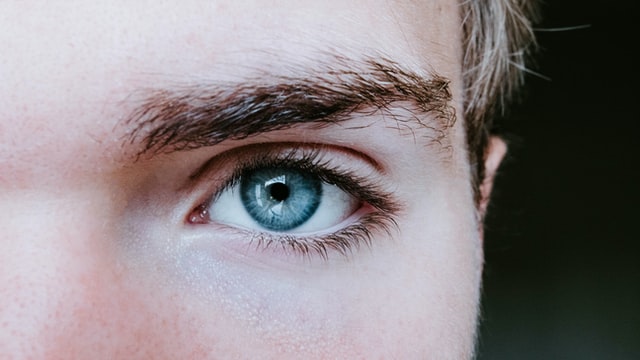
Patients are usually asked to follow a number of steps after the procedure to ensure the best recovery possible. Occasionally vision is immediately improved but may fluctuate for several weeks. Usually a shield is worn over the eye for a short period of time and each night for the first week until complete healing occurs, because to protect the flap, the eyes and lids can NOT be rubbed. After surgery your doctor will schedule you for a series of follow up examination. The first post operative examination is usually within one or two days in order to remove the eye patch and assess your initial recovery. The surgeon may also wish to see you at periodic intervals throughout the next six months. Soreness, a burning or itching sensation, and the feeling that something is in your eye, are all typical for the first several hours and lessening for up to a week following surgery. Vision is usually hazy or blurry for that period, and tears or watery eyes is common. During your LASIK recovery, your vision will seem blurry and your eyes could be watery until the cornea heals completely. Many people see clearly soon after their laser procedure, however, each patient responds differently. You may be sensitive to bright light. You may see halos, or have difficulty seeing in low levels of light. Usually these conditions dissipate within a few weeks. Although LASIK complications can occur, most vision correction patients are able to return to work and other daily activities the next day. Glasses, if necessary, for reading and distance are not prescribed until at least two weeks following the operation. Lifestyle effectsLASIK eye surgery patients have to use medicated eye drops for one to two weeks following laser eye surgery. Lubricating drops may be required for anything from a few weeks to a few months. PRK patients will use eye drops on a decreasing level for approximately 3 to 6 months. The length of time each patient needs to use eye drops depends on their own healing response time. LASIK and PRK can usually have very little impact on your lifestyle. Activity restrictions are generally short-term. Immediately following laser eye surgery, there are a number of activities you should refrain from doing. Do not rub your eyes. Wear high quality sunglasses. Do not drink any alcohol for at least 48 hours. No eye makeup should be worn for the first week. Spas, pools, and tanning booths should be avoided for one month. Wear protective eyewear for any work where you are at risk of flying debris. You must wait at least three days before participating in any non-contact sports, and two months for contact sports and water sports. Do continue to gently wash around your eyes with a mild cleanser. During recovery visits, your surgeon will assess your vision to test the outcome of the surgery. Your Doctor will also determine if your eyes are healing properly, and look for any post-procedure side effects. Follow up procedures are occasionally necessary and are performed as soon as the eye is stable but usually no earlier than two months from the original procedure. You can learn more about eye surgery in Ophthalmic Consultants of the Capital Region, so visit us now! Lasik Eye Surgery TipsPublished on March 29, 2022 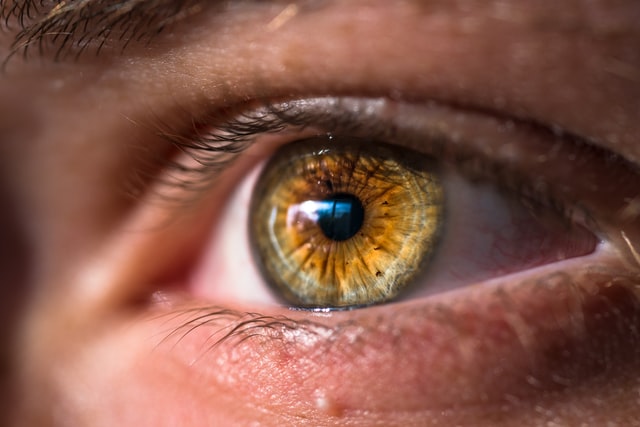
LASIK eye surgery is an exciting new form of corrective eye surgery that has already permanently changed the world of eye treatment. The vast majority of ophthalmologists agree that it allows for an extremely high degree of precision with a very low margin of error and is overall the lowest risk form of corrective eye surgery performed today. So what is LASIK eye surgery, and who is it for? LASIK eye surgery is one of several forms of refractive eye surgery that fall under the category of precision surgeries, which use lasers and are generally designed to correct for blurred vision due to myopia (nearsightedness), hyperopia (farsightedness), and astigmatism (blurred vision). LASIK eye surgery is designed for the more severe forms of these conditions and involves the use of lasers in combination with a knife-based incision to correct for the disorders. LASIK eye surgery is more invasive than other forms of precision eye surgery, but can be done with an amazing level of accuracy and normally produces better results in correcting refractive disorders. The lasers involved are actually not hot, and are so precise they can cut millionths of an inch from the cornea, which is far more precise than previous methods. LASIK eye surgery is thus rapidly replacing the older forms of refractive eye surgery for corrective severe sight conditions, and will likely be a standard in such procedures for many years to come. If you are interested in LASIK eye surgery, you should talk to your eye doctor about it. Does he or she recommend it, and why or why not? Although most doctors agree that it is an exciting technology with a lot of potential, doctors have different opinions about when and how often it should be used. Depending on your condition, your doctor may advise you to try a different form of precision surgery. If you decide to go with LASIK, the first thing you will notice is that the prices for the procedure vary considerably everywhere. However, because LASIK eye surgery does involve an incision you want to make sure you go with someone that has done a number of the procedures before. This is one case where the added risk is not worth cutting costs! With an experienced surgeon, the procedure has a very low overall risk compared to earlier methods. If you are suffering from a severe refractive eye condition, you should give LASIK eye surgery a closer look; no pun intended! Not having to worry about glasses or contacts may well be worth the cost and the low risk. If you are looking for more tips about lasik eye surgery, check out Ophthalmic Consultants of the Capital Region now! Cosmetic Surgery Eye LiftPublished on March 24, 2022 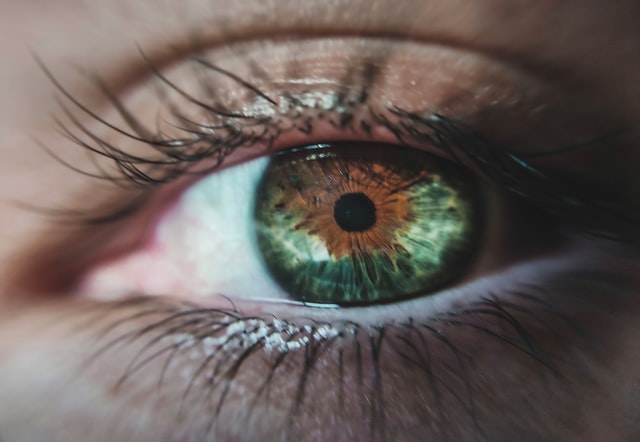
While cosmetic surgery has sometimes been seen as a predominantly female domain, an increasing number of men are choosing to go under the knife – or the syringe – in a bid to rejuvenate their appearances. Many men have seen the benefits of cosmetic surgery in action and have decided that they don’t want to be left behind by their female counterparts. Once only an option for the rich and famous, surgery is now available to the average person. This means that more people than ever before are turning to cosmetic surgeons in search of the confidence boosting treatment that they hope will change their life. From non-surgical treatments such as wrinkle relaxing injections to liposuction, the choice offered by cosmetic surgery clinics has increased exponentially in recent years and many new introductions to the market have grabbed a lot of media attention. However, there are a number of treatments that remain steadfastly popular no matter what is currently splashed on the fashion pages. For example, breast augmentations are consistently the most popular surgery option for women, with tummy tucks and liposuction remaining near the top despite the recent attention treatments such as Botox have garnered. Liposuction is also among the top cosmetic operations chosen by men, and breast augmentation procedures for men are currently on the increase as men realise that there is a treatment designed to help them eliminate ‘man boobs’. There are also a range of cosmetic surgery procedures favoured almost exclusively by men, such as pectoral implants. Another area in which the top cosmetic surgery choices for men and women converge is in cosmetic surgery for the face. Eye bag removal and nose re-shaping are popular for both sexes, as are Botox jabs and fillers, as men and woman choose to rejuvenate their appearance with procedures that typically take less recovery time than traditional methods. These treatments prove even more popular during times of financial struggle as, not only do they tend to offer a cheaper alternative, but are also chosen for their age-defying qualities as people vie for jobs in a tough market. While the top surgery choices for men and women are in some ways similar, it is clear that a divide between the sexes does remain. However, the number of men choosing to undergo cosmetic surgery continues to rise and as more men experiment with cosmetic work we could find that this divide is reduced. Looking for an ophthalmologist to check your eye if you need eye surgery, check us out now! Laser Eye surgeryPublished on March 10, 2022 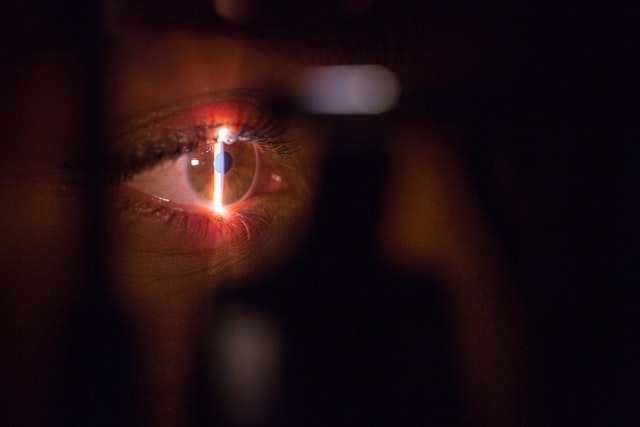
Call me old fashioned, but laser eye correction surgery sounds like a ridiculous and dangerous kind of unnecessary procedure. We live in a world where, no matter how good the technology is, people are always looking for bigger, better, and faster, and the thing with laser eye surgery is really no exception. It is not enough that people can have glasses, or even contacts that, when worn, make their vision perfect. Now they have to get unnecessary laser eye surgery to make it so that there vision is perfect all of the time. Now, this surgery costs many times as much as glasses, and like all surgery, it poses possible risks. Because it is so new, no one knows for sure what laser eye surgery will do in the long run, and it is possible that it may have no adverse consequences. But it is also possible that, in a few years, the eyeballs of everyone who gets it will collapse with no warning. I am not suggesting that this is going to happen no matter what to anyone who has laser eye surgery, but what I am saying is that it is not worth the risk. Surgery is inherently dangerous and risky, with such possibilities as infection, tissue scarring, and innumerable other dangers which can afflict anyone who undergoes it. Is it really worth risking your health to have perfect vision when, in reality, you can see just fine with glasses and no laser eye surgery. Personally, I am a big fan of the idea of 'good enough'. We have a society that practically worships the - next big thing - and so there is no stopping people from jumping on the latest technology when, in practice, it might not do them any good. I have been wearing glasses for years. I have actually had them since I was eight years old and, besides being teased a little bit in school, I can not see how they were ever that much of an inconvenience. They corrected my vision well enough, and began to look even fashionable as I got older. Really, who needs surgery when we have a perfectly good technology to correct vision that has been available for over a hundred years? In all that time, before laser eye surgery, optometrists have had the chance to perfect glasses and develop contacts, so that now there is no almost anyone can use them to see clearly. Click here to know more about laser eye surgery. Causes of glaucomaPublished on February 26, 2022 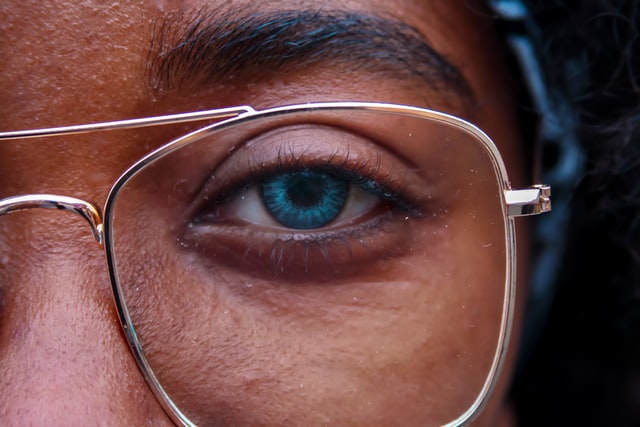
Glaucoma is caused by a blockage in part of the eye. This prevents fluid draining out of the eye and increases pressure in the eye, called intraocular pressure. How the eye worksThe eyeball is filled with a watery substance called aqueous humour, which creates pressure in the eye to give it shape. In healthy eyes, this fluid constantly flows in and out of the eye. It drains back into the bloodstream at the same rate that it's produced to maintain the correct pressure. Glaucoma occurs when the drainage tubes (trabecular meshwork) within the eye become slightly blocked, preventing the aqueous humour from draining properly. An obstruction within the eye, such as a blood vessel blocking the trabecular meshwork, can also prevent fluid from draining properly. When the fluid cannot drain properly, the pressure in the eye builds up and can damage the optic nerve (the nerve that connects the eye to the brain) and the nerve fibres from the retina (the light-sensitive nerve tissue that lines the back of the eye). It's often unclear why the drainage tubes become blocked or why other parts of the eye obstruct the tubes. Increased riskThere are a number of things that can increase your risk of developing glaucoma:
Pseudoexfoliation glaucomaA relatively common cause of secondary glaucoma is known as pseudoexfoliation glaucoma. This type of glaucoma is caused by the body producing abnormal protein fibres, which can block the flow of fluid out of the eye, leading to glaucoma. The causes of pseudoexfoliation glaucoma are unclear but most experts think that it is a genetic condition. Pseudoexfoliation glaucoma is treated in the same way as primary glaucoma. If you are looking for more information about glaucoma, visit Ophthalmic Consultants of the Capital Region. Contact Lenses and Teens (Are Contact Lenses Right for Teens?)Published on February 15, 2022 
If you have a teenage child in your home, you may be wondering whether or not contact lenses are right for that child. Through that article, we will visit with you about whether or not contact lenses are right for your teenage child. History of Contact Lenses and TeenagersMany years ago it was thought that only people in their late teens and older were candidates for contact lens wear. Because the lenses were hard and not gas permeable, perhaps that rule served a purpose. Reasons Why Teens Might Benefit from Contact LensesBut today there are many reasons for teenagers (and even children) to wear contact lenses. Eyeglasses are often an embarrassment to teens, and they are already self-conscious. For teens who wear orthodontic braces, this can be a double-whammy to their self-esteem. For those who are responsible enough to keep their hands clean when touching lenses and their eyes, handle the lenses properly, and care for their own eyes, contact lenses should be considered as an alternative to eyeglasses. Contact Lenses for a Teen with AstigmatismSome young people do have astigmatism, which would make soft contacts a poor choice. For them, a rigid gas permeable lens (RGP) or toric lens may be a better choice. Both of these lenses require greater coordination to place on the eye-the RGP lens is a little more complicated to place, and the toric lens as a top and bottom that must be set perfectly-so once again the maturity and coordination of the teen is key. Disposable Contact Lenses -- A Good Choice for Your TeenagerOne good choice may be the disposable lens. These are becoming more and more popular. The enzymatic cleaning of protein deposits are no longer a concern, and there is no longer a multi-step process for nightly care. Also, if one tears or slips down the sink, it’s not a big loss-they are inexpensive to replace, the daily disposables often costing less than a dollar per pair. Daily disposables are also good choices for teens with allergies, and for teens who aren’t sure if they will stick to wearing contacts. Buying the Right Contact Lens CaseWhether you choose soft lenses or RGP contact lenses, make sure you choose a smooth case. Soft contacts can get torn and RGP lenses scratched in a case that has not been properly smoothed at the factory. Making sure the lens is centered in the reservoir with lots of fluid will also help protect it from edges and the case top. Lenses can also become scratched and torn from rough skin, so if the child is involved sports make sure rough skin is smoothed. Orthokeratology and Your TeenagerSome parents are considering orthokeratology for their teenagers. Orthokeratology is a therapeutic kind of contact lens where the wearer slips on a special gas permeable lens for overnight wear. This lens is designed to reshape the eye while the wearer is asleep, and the person will wake up with clear vision without the use of glasses or contacts. However, these contact lenses are much riskier with regard to infections and injury. If you are looking for an ophthalmologist, check us out now! Diagnosing GlaucomaPublished on February 08, 2022 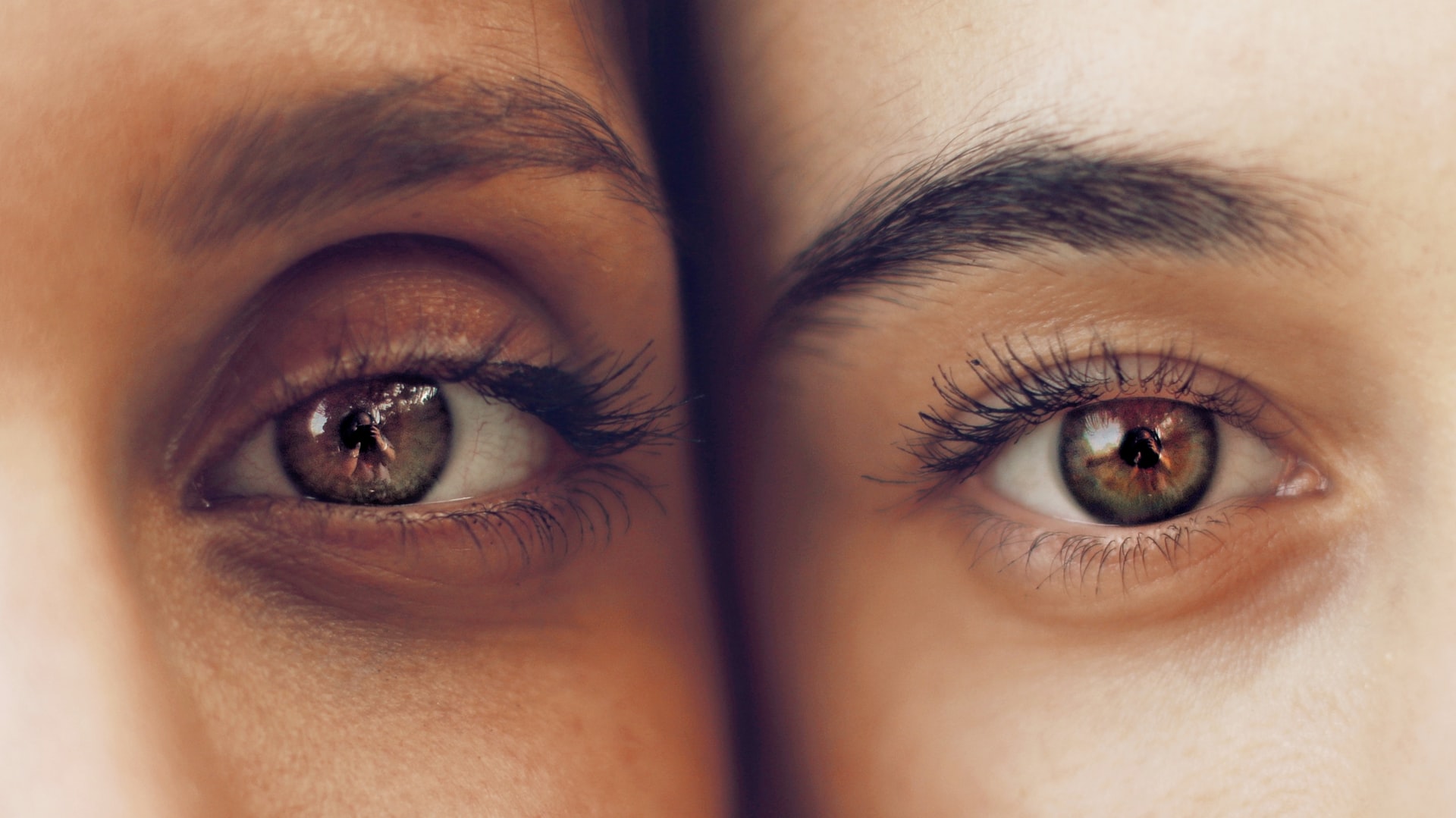
Your eye doctor has a variety of diagnostic tools which aid in determining whether or not you have glaucoma -- even before you have any symptoms. Let us explore these tools and what they do. The TonometerThe tonometer measures the pressure in your eye. Your doctor places a numbing eye drop in your eye. Then you sit at a slit-lamp, resting your chin and forehead on a support that keeps your head steady. The lamp, which lets your doctor see a magnified view of your eye, is moved forward until the tonometer, a plastic prism, barely touches the cornea to measure your IOP. The test is quick, easy and painless. The PachymeterThe pachymeter measures central corneal thickness (CCT). Like the tonometer, your doctor will first anesthetize your eyes. Then a small probe will be placed perpendicular to the central cornea. CCT is an important measure and helps your doctor interpret your IOP levels. Some people with thin central corneal thickness will have pressures that are actually higher than when measured by tonometry. Likewise, those with thick CCT will have a true IOP that is lower than that measured. Measuring your central corneal thickness is also important since recent studies have found that thin CCT is a strong predictor of developing glaucoma in patients with high IOP. Visual Field TestVisual field is an important measure of the extent of damage to your optic nerve from elevated IOP. In glaucoma, it is the peripheral (side) vision that is most commonly affected first. Testing your visual field lets your doctor know if peripheral vision is being lost. There are several methods of examination available to your doctor; visual field testing has advanced significantly in recent years. In computerized visual field testing you will be asked to place your chin on a stand which appears before a concave computerized screen. Whenever you see a flash of light appear, you press a buzzer. At the end of this test, your doctor will receive a printout of your field of vision. New software has been developed to help your doctor analyze these tests as well as monitor progression of visual field loss over successive tests. OphthalmoscopyUsing an instrument called an ophthalmoscope, your eye doctor can look directly through the pupil at the optic nerve. Its color and appearance can indicate whether or not damage from glaucoma is present and how extensive it is. This technique remains the most important in diagnosing and monitoring glaucoma. Imaging TechnologyA number of new and highly sophisticated image analysis systems are now available to evaluate the optic nerve and retinal nerve fiber layer, the areas of the eye damaged by glaucoma. These devices include scanning laser tomography (e.g. HRT3), laser polarimetry (e.g. GDX), and ocular coherence tomography (e.g. older time-domain OCT or newer spectral-domain OCT). These instruments can help your doctor by giving a quantitative measure of the anatomical structures in the eye. Photographs of the optic nerve can also be useful to follow the progression of damage over time. Large databases have been established to compare an individual's anatomic structures to those of other patients in the same age group. This software and technology are developing rapidly and show great promise. However, they have not yet evolved to replace ophthalmoscopy, where the doctor looks directly at the optic nerve. GonioscopyYour doctor may perform a gonioscopy to closely examine the trabecular meshwork and the angle where fluid drains out of the eye. After dilating and numbing the eye with anesthetic drops, the doctor places a special type of hand-held contact lens, with mirrors inside, on the eye. The mirrors enable the doctor to view the interior of the eye from different directions. In this procedure, the doctor can determine whether the angle is open or narrow. Individuals with narrow angles have an increased risk for a sudeen closure of the angle, which can cause an acute glaucoma attack. Gonioscopy can also determine if anything, such as abnormal blood vessels or excessive pigment, might be blocking the drainage of the aqueous humor out of the eye. Click here to know more about the treatment protocols for conditions such as diabetic eye diseases, macular degeneration, cataracts, glaucoma, dry eye, eye injuries, and LASIK. What Does Cataract Eye Surgery Involve?Published on February 08, 2022 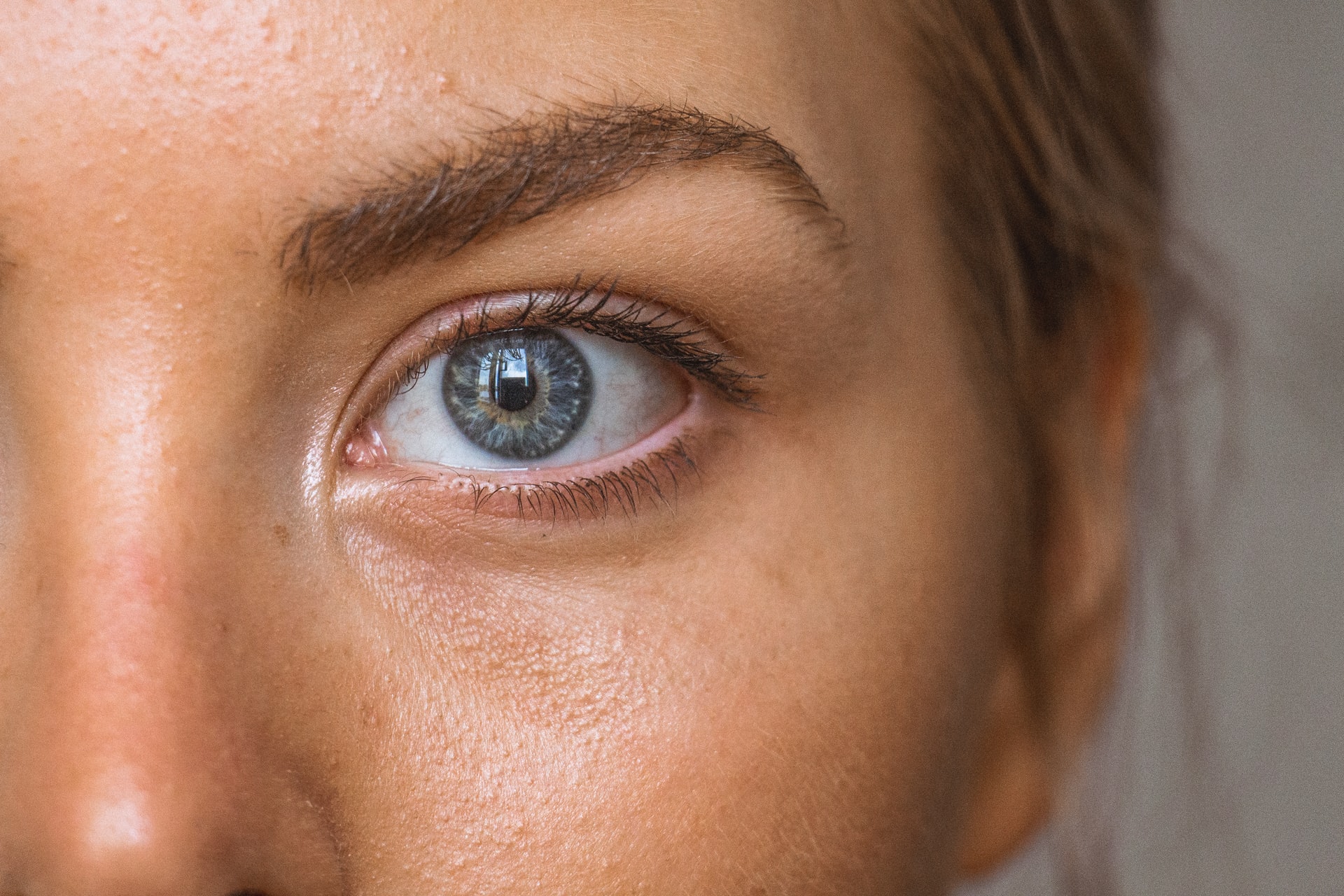
More than a million cataract surgeries are performed each year on an outpatient basis. During cataract eye surgery, the clouded lens is removed and replaced with a plastic one. One method is called Phacoemulsification which involves using ultrasound to break up the cataract. A small incision is made in the eye and suction is used to remove the cataract. After the cataract is successfully removed, an intraocular lens is implanted. This lens becomes a permanent part of your eye and you can’t see it or feel it. Another method of removing the clouded lens involves Extracapsular surgery. A longer incision is made on the side of the cornea and the core of the cloudy lens is removed in one piece. The rest of the lens is removed by suction. Discuss the benefits and risks of each with your doctor. Unlike Lasik eye surgery, most cataract eye surgery patients will still need to wear prescription glasses. Cataract eye surgery enjoys an impressive 98 percent success rate and as it is considered a necessary, rather than cosmetic surgery, insurance usually covers the cost. There are two types of lenses used in cataract surgery: Monofocal and Multifocal. MonofocalWith the monofocal lens implant, you’ll experience normal vision at one distance, usually far distance and may need glasses for near vision. If you have astigmatism, which is very common, the monofocal lens is the one you’ll need. MultifocalWith a multifocal intraocular lens implant, you’ll experience normal vision at all distances, which may eliminate the need for prescription glasses. One drawback to the multifocal lens is that you most likely will see circles or “halos” around lights at night which could interfere with your night vision. Unlike Lasik eye surgery, cataract eye surgery is reversible in that the intraocular lens can be replaced. For example, if you choose to have the multifocal lens implanted and you find the halos around lights disturbing you may opt for the monofocal lens. If you’re having cataract surgery in both eyes, however you would need to have the same kind of lens implanted in each eye. Complete healing may take several weeks but you can go about your normal routine fairly quickly. As with other eye surgeries, after having cataract eye surgery, follow your doctor’s instructions completely, and report any unusual side effects or severe pain. Your eye will naturally itch and you’ll notice dryness while the eye is healing. Be sure and use the eye drops the doctor gives you. Don’t hesitate to call your doctor to ask questions or to report any bothersome symptoms. You'll find the answer you're looking for at Ophthalmic Consultants of the Capital Region which provides everything you need for your vision, from the right eyeglasses to medical and surgical care. A-Z About Vision Problems in ChildrenPublished on January 04, 2022 
Superior and all round eye health and clear vision are quite crucial for the improvement and development of children. With correct vision, youngsters obtain know-how and abilities that will stay with them their entire life. Specific eye disorders like refractive errors, squint and amblyopia(lazy eye) mainly have various effects on kids. Kids are distinct from adults in the sense that a child’s brain develops far more quickly. Any problem a kid experiences with his vision will disrupt the development of his usual pathways to the brain and may trigger permanent visual impairment. Early detection and therapy can avert visual loss, learning disabilities and delayed development. Youngsters normally can not inform us when they are possessing troubles while making constant use of of their eyes. Parents, grandparents and teachers are frequently the first men and women to suspect that a kid features a difficulty as well as the earlier an issue is detected and treated, the additionally effective and better the remedy or treatment is. A few of the warning symptoms that may indicate the kid might have a visual problem and which warrants a session with your eye specialist are:
Suggestions for Eye Testing in Kids :
Some of the Most Common Vision Problems in Children are:1. Refractive errorsa) Myopia(near sightedness)- image from a distant object is focused in front of your retina and causes distant objects to appear out of focus, majorly causing severe headaches. Glasses must be worn to bring the image to concentrate on the retina or even the exercises recommeded by us can be practiced on a daily basis for natural vision improvement. b) Hypermetropia(far sightedness)- image from objects fall behind the retina causing near objects to appear out of focus giving way to fatigue, eye-strain, eye- throbbing, difficulty in reading and squint. Glasses have to be worn to bring the image into focus or regular practicing of the exercises to improve eyesight recommended by us. c) Astigmatism- image of an object falls at two focal points in two various places therefore causing distant and close to objects to seem blurred causing fatigue and eye-strain. 2. Strabismus(squint)Squint is actually a misalignment in the two eyes in which either a single or both the eyes may perhaps turn inward outward/upward/downward. This happens because of failure of your eye muscles to operate collectively. If a parent feels that a child’s eye seems to be deviating, they should really seek the advice of the ophthalmologist right away considering the fact that delay in therapy may cause permanent visual impairment. A youngster will outgrow his squint is a myth. It could bring about profound visual impairment. Treatment selections to get a child affected with squint may perhaps involve glasses, eye exercises to improve eyesight or surgery to straighten the eyes (least recommended). 3. Amblyopia (lazy eye)Amblyopia or lazy eye is decreased vision in an eye which had not received sufficient stimulus in the course of early childhood. It might take place as a result of squints, refractive errors etc. The eye which has superior vision suppresses the image in the other eye which becomes weak and if not treated in time becomes lazy or useless. With early treatment the sight inside the lazy eye might be restored by very first treating the underlying reason or cause. This is followed by patching the much better eye for a variable time frame forcing the lazy eye to work by strengthening its vision. Medication within the form of drops or ointment to blur the vision of your good and healthy eye can also be utilized along with forcing and utilizing the weaker eye to operate. 4. Retinopathy of Pre-Maturity (ROP)ROP is really a disorder in the blood vessels in the retina (light sensitive aspect/region of the eye). It is actually observed in premature and low birth weight babies. In ROP the blood vessels can bleed causing retinal scaring and detachment resulting in visual loss. Early stages of ROP show improvement without remedy but really serious eye damage can take place in later stages. To be able to stop visual complications all premature babies born ahead of 28 weeks should undergo normal eye screening from four weeks of age and if they show indicators of extreme ROP, remedy like laser, cryotherapy or surgery may possibly must be undertaken. Children Related Eye injuriesInjuries in kids may cause significant eye damage which might be prevented using a handful of safety precautions like:
Initial First Aid Tips for Childhood injuries :a) Instruct the kid not to rub his eye. b) Do not try to eliminate particles from a child’s eye. c) In case of a chemical injury wash the eyes with clean water. d) Seek healthcare support straight away. If you are looking for an ophthalmologist to check your kids eyes, check out Ophthalmic Consultants of the Capital Region. Diabetes And Eye Problems: Read This Before You Go BlindPublished on December 02, 2022 
Diabetes happens when your body does not generate enough of the hormone “insulin” or since the insulin that is heavily produced features a reduced impact. Insulin regulates the way your body utilizes the food you have eaten. When you’ve got diabetes the body can’t cope with sugar along with other carbohydrates that you simply eat. If you have diabetes, standard visits for your eye medical professional for normal exams are critical to avoid eye problems. High blood sugar (glucose) increases the danger of eye issues from diabetes. In reality, diabetes will be the major cause of blindness in adults ages between 20 to 74.You could have heard that diabetes causes eye issues and may result in blindness. People today with diabetes do possess a higher threat of blindness than individuals who don’t suffer from diabetes. But most of the people who have diabetes have practically nothing more than minor eye issues. With standard checkups, you may hold minor complications. And in case you do develop a major issue, you’ll find remedies that usually work effectively if you commence them right away. How Does Diabetes Cause Cataracts?Clouding and fogging of the normal eye lens is known as cataract. Like a camera due to this lens we are able to see and focus on external objects. As there is no set age for getting cataracts, people suffering from diabetes have a tendency to get cataracts or other eye problems at a very young age also increases at a very rapid rate. What diabetes does is that it causes the very important eye lens to swell, which alters the vision a great deal. To eliminate this problem one needs to get the target and optimum sugar levels back to suggested levels through medication or insulin dosage. Sometimes it may take up to 4 months to return to normal vision after commencing the recommended steps suggested by the doctor. One thing is to note that if a person has diabetes and has started to encounter blurring vision, it can be warning of many not so good things to come related to eye health and this is a major symptom of incoming serious eye complications. How Does Diabetes Cause Glaucoma?Glaucoma is really a disease of your optic nerve, often attributable to irregular and increased pressure inside the eyes, that leads to loss within the visual field and sooner or later results in complete blindness. Glaucoma is considered to be a scary disease for many people today because of this, and also due to the fact its symptoms might not be obvious until the illness is quite advanced. The loss of vision that occurs with glaucoma features a couple of variables. First one is massive stress and pressure, and another is weakening of the optic nerve and disk (the area where the nerve connects to the retina). So should you have a really powerful optic nerve and disk, even higher pressure will not necessarily bring about the loss of eyesight, but for those who have a weak optic nerve and disk, even low stress could very easily bring about a loss of vision or eyesight. So because of this reason, everyone has to be strictly evaluated to decide whether they’ve a weak or even a robust optic nerve and disk before the effects of stress are usually understood and predicted accurately. What is Diabetic Retinopathy?Now first let us discuss the importance of retina? The retina is a bunch of specialized cells which help in converting the light that enters our eye through the lens into images and the optic nerve helps in transferring these signals to the brain. Due to the damage of these small vascular vessels also known as “microvascular complication”, diabetic retinopathy is caused. These complications have been known to arise due to high blood sugar levels. It is a well known fact among the medical fraternity that diabetic retinopathy is one of the major reasons and cause of irreversible and permanent blindness. In fact the duration of the diabetes determines the chances of a person getting affected by diabetic retinopathy. So unlike cataracts, this is a very serious eye condition if not treated in its early stages can result in permanent blindness. People affected with type 2 Diabetes have shown to suffer various eye problems and diseases. And to slow the progression of various eye complications and disorders it is recommended to control blood sugar levels, blood pressure and blood cholesterol. So readers these are the 3 major eye disorders that occur due to diabetes. These are the points always to be kept in mind if you already are suffering from diabetes and have started to experience some recent eye complications. Click here to know more about the treatment protocols for diabetic eye diseases. Nearsightedness Correction – It’s Possible!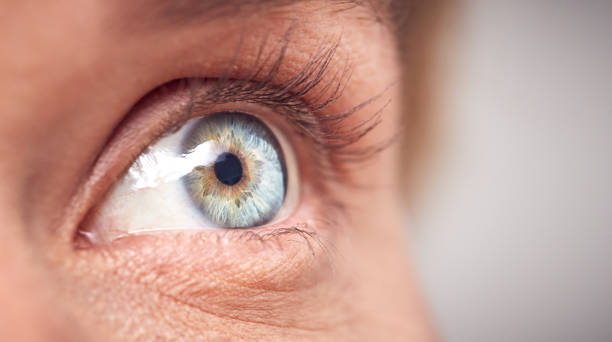 There has always been the need of a doctor in order to get solution of any kind of disease. But on the other hand there are certain exercises which everyone knows that the same are helpful in curing so many diseases like hypertension, diabetes and nearsightedness correction. The issue of nearsightedness could be found in the male and female of all the ages starting from one year to sixty years of patients. It has also been discussed among the general public about the exercise that can help facilitates the patients of eye for nearsightedness correction. Yes it is true that you can do many things to self improving your eyesight with different exercises. Exercise that can help for nearsightedness correctionIt is very obvious that we should consult to the doctor for discussion of the problem and for taking medicine for the disease including the problems of nearsightedness correction. But on the other hand you should also use some natural procedures and exercises that can help you out for overcoming the affects of the disease. There so many natural products that could be used to improve your eyesight with the consultation of your eye specialist. You can include the herbal products as the part of your diet for the purpose of nearsightedness correction. You can a detailed plane from your doctor to self improve your vision for any problem of eye you got. Some Typical Ways for nearsightedness correctionMost of the people did not bother when they feel difficulty in watching the things from near. Such people lose their eyesight in a short time span. However, some people used the eyesight glasses after consulting their doctor and taking the number of the glasses for nearsightedness correction. Such people make up their deficiency of weak eyesight immediately by wearing glasses for some months as prescribed by the doctor for nearsightedness correction. It has been transpired that nearsightedness could also be controlled by using the eyesight glasses for a short time. After that he needs not to use the same in whole of his life. Points to be Taken Care of for nearsightedness correctionHere are some points that should be taken care of and the same will help you in nearsightedness correction of a patient. Doctor is compulsory but you have to choose a doctor who is expert in the field of eye and did not use the surgery immediately. On the other hand exercise could be the best source for nearsightedness correction.
To see more articles like this, visit Ophthalmic Consultants of the Capital Region. What You Need To Know About Lens For Myopia Myopia is a common disease that has been found in the patients of eye due to which a patient could not see the things properly. On the other hand it might be possible that the patient could not see the things from near. The said problem of eye could be cured with the help of lens for myopia. The improvement and prosperity of medical science has enabled the doctors to discover such kind of lens i.e. lens for myopia which is the best treatment for the patient of the same problem. There are so many other kinds of lenses available which are being used as a treatment of eye problem including the above mentioned. What is lens for myopia?The myopia is just like a medicine which is being used for those patients who suffers from the problem of shortsightedness or nearsightedness. On the other hand lens for myopia has been used by the eye specialist to overcome the problem of the patient so that he can see well. The lens for myopia has been placed inside the eye of the patient through and eye surgery by the doctor. It is not a very big surgery and did not take much time to take place. After the surgery some rest has been suggested to the patient by the doctor after that he can see everything well from near and far too. Natural ways of improving vision without lens for myopia The surgery of anything has always been considered as the last resort so to protect the patient from the disease attack like the surgery of lens for myopia. It has been advised by the experts that you should fist of all use some natural ways and exercises with the help of which the patient can improve his vision naturally. The green color is considered as the cool one for the eyes therefore you should expose your eyes to the greenish things in the morning. This exercise will help you in improving your vision as well as protect you from the surgery of lens for myopia. Some Important Information about lens for myopiaThe nature and understanding of the disease of myopia has been discussed in the above paragraphs. You can clearly understand now the importance of surgery of lens for myopia. In case if any patient not try the said surgery of lens for myopia and also did not try the natural exercise for improving his vision then his eyesight become weaker with the passage of time.
Click here if you are still concerned with your vision, consult an optometrist. However, prevention is better than cure. And creating some changes in your diet is just one option to preserve the health of your vision. Is LASIK Good for You?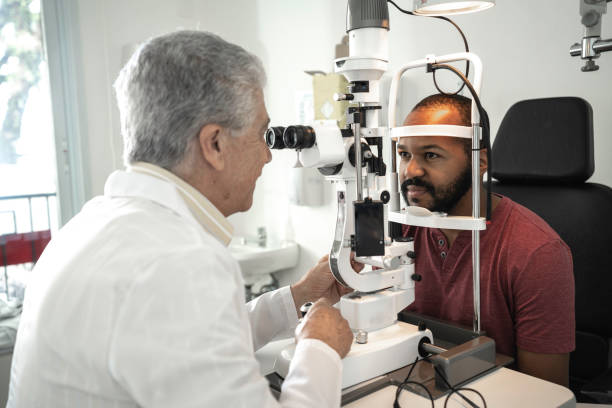 If you are suffering from any refractive errors of the eye like myopia or short sightedness, hypermetropia or far sightedness (unable to see near objects clearly) and astigmatism, it is only natural to have a doubt if you are fit for Lasik eye surgery. If you decide to undergo laser eye surgery for you vision problem, it is important to know if lasik eye surgery will be good for you or not. Due to the advancement of technology and techniques (use of “wavefront technology” to map the cornea before undergoing Lasik eye surgery, which reduce the side effects and complications in Lasik eye surgery) in eye surgery many more patients with eye problem can undergo eye surgery including Lasik eye surgery without much complication, who were considered not fit to undergo Lasik surgery previously. At present almost all the patients with refractive errors of the eye can undergo Lasik eye surgery unless they have diseases like glaucoma (this is due to raised intra-ocular pressure to more than 21 mm of Hg, up to which the pressure of the eye is considered normal), high blood pressure, diabetes mellitus with high and uncontrolled blood sugar, severe general weakness, very low level of body immunity (immuno-compromised patients like AIDS or other causes) etc. If you are suffering from any of the systemic diseases mentioned above, than the disease should be under control (e.g. high blood pressure should be brought to normal with proper medication, blood sugar level should also be within normal limit etc.) before undergoing Lasik eye surgery. If your systemic disease (like hypertension, diabetes etc.) are not under control it may cause complication during surgery and post operatively. To reduce post operative complication of Lasik eye surgery (and also any other surgery) it is important to have body physiology to as close to normal as possible, as the best time for surgery is when the body physiology is normal. It is very important to have a clear idea what Lasik eye surgery is, before you have to undergo Lasik eye surgery. If you understand the procedure clearly it will reduce your apprehension about the surgery, which will in turn reduce intra-operative and post operative complications. You should ask your ophthalmic surgeon about the procedure and a good doctor will always try to remove fear, concerns and apprehension and dispel any myth that you may have. So it can be said easily that you are a good candidate for Lasik eye surgery, unless you are suffering from disease like glaucoma, high blood pressure, diabetes or if you have low level of immunity. Click here for more further tips about lasik surgery. |